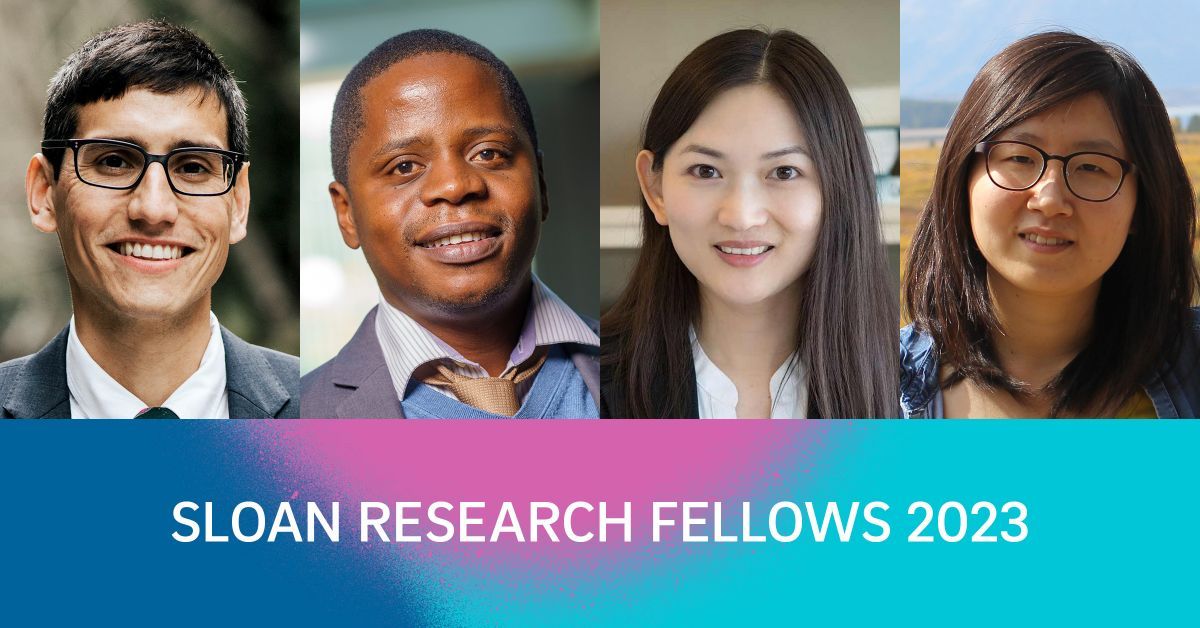Four Early Career Professors at UC San Diego Awarded Sloan Research Fellowships
Story by:
- Michelle Franklin - m1franklin@ucsd.edu
- Daniel Kane - dbkane@ucsd.edu
- Katherine Connor - khconnor@ucsd.edu
Media contact:
Published Date
Story by:
- Michelle Franklin - m1franklin@ucsd.edu
- Daniel Kane - dbkane@ucsd.edu
- Katherine Connor - khconnor@ucsd.edu
Media contact:
Share This:
Article Content
Four professors at the University of California San Diego have been selected as 2023 Alfred P. Sloan Research Fellows, a prestigious award for early-career scientists of outstanding promise. The two-year, $75,000 fellowships are awarded in recognition of distinguished performance and a unique potential to make substantial contributions to their field.
A Sloan Research fellowship is one of the most distinguished awards available to young researchers, in part because so many recipients have gone on to become unparalleled leaders in their fields — 56 Fellows have received a Nobel Prize, 17 have won the Fields Medal in mathematics, and 22 have won the John Bates Clark Medal in economics.
The four UC San Diego awardees are:
Javier Duarte, professor of physics
Sloan Research Fellow in Physics
Tod Pascal, professor of nanoengineering
Sloan Research Fellow in Chemistry
Lingyan Shi, professor of bioengineering
Sloan Research Fellow in Chemistry
Xiaochuan Tian, professor of mathematics
Sloan Research Fellow in Mathematics
"Sloan Research fellows are shining examples of innovative and impactful research,” said Adam F. Falk, president of the Alfred P. Sloan Foundation. “We are thrilled to support their groundbreaking work and we look forward to following their continued success."
The four UC San Diego faculty are among the 125 scholars in the 2023 class of Sloan Research Fellows.
"Congratulations to our four Sloan Research Fellows for 2023," said UC San Diego Chancellor Pradeep K. Khosla. "The fact that four of this year's 125 Sloan Fellows hail from UC San Diego is a well-deserved recognition of the exceptional caliber of our faculty. With $1.64 billion in research expenditures, our campus is leading research breakthroughs for the public good."
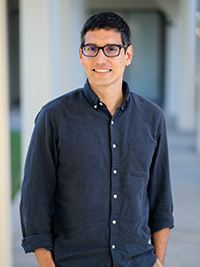
Javier Duarte
Javier Duarte is a member of the Compact Muon Solenoid experiment at the CERN Large Hadron Collider. He leads a research group developing new artificial intelligence (AI) techniques for high-energy particle collisions to better measure the properties and interactions of elementary particles, like the Higgs boson, and to search for new physics. Duarte is a co-creator and maintainer of the open-source project hls4ml, which aims to democratize AI-hardware codesign for science. On the educational side, Duarte has developed a new course at UC San Diego on data science and machine learning in physics, emphasizing collaboration among students and an inclusive learning environment, especially for underrepresented groups in physics.
Before joining UC San Diego, he was a Lederman postdoctoral fellow at Fermilab. He received his Ph.D. in Physics at Caltech and his B.S. in Physics and Mathematics at MIT. Duarte has received a Department of Energy Early Career Award for real-time AI in particle physics, a Research Corporation for Science Advancement Cottrell Scholar Award, and is a co-principal investigator of the National Science Foundation’s Accelerated AI Algorithms for Data-Driven Discovery.
“I’m honored to be recognized as a Sloan Research Fellow along with this amazing cohort,” Duarte said. “This fellowship gives me the opportunity to do more exploratory R&D of bigger, faster, and smarter AI models for experimental particle physics.”
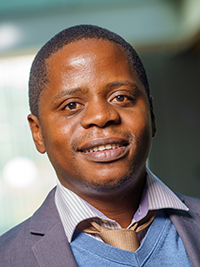
Tod Pascal
Pascal exploits quantum effects at the nanoscale to both create new materials from the atomic level up, and to modify existing materials to give them more desirable properties. These materials could be used for everything from energy storage and conversion, to future display technologies.
As a co-lead of the Predictive Assembly research thrust of UC San Diego's prestigious Materials Research Science and Engineering Center (UC San Diego MRSEC), Pascal co-leads a team of researchers working to create new materials from the ground up. They first use supercomputers and computational modeling to predict which arrangements and orientations of atoms will yield a desired result, predicting the structure, properties, and microscopic signatures of these complex materials. The computationally derived materials are then tested to confirm they function as expected, and that the newly created materials have the predicted characteristics.
In addition to this type of predictive assembly of new materials, researchers in Pascal’s lab also use computational models to transform existing materials into even more powerful tools.
“Up until very recently, the idea was to find better and better materials,” said Pascal. “But now, we are developing an approach where we’re attempting to change every-day materials and make them better. In other words, we explore how we can use various factors, such as light, or electric fields, or localized heating, to change a material’s surface chemistry dynamically, at the atomic level. The dream is to do this in a rational way, so you can turn what is nominally not a great material into a pretty good one to, for example, catalyze a reaction.”
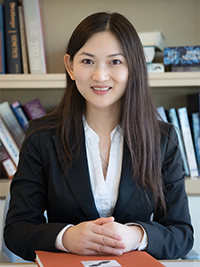
Lingyan Shi 石玲燕
UC San Diego bioengineering professor Lingyan Shi is pushing the boundaries of what's possible when it comes to using targeted light to look inside living cells. Her work in the fast-moving field of biophotonics has already led to the development of improved platforms for peering into living cells with high resolution both in terms of space and time. For example, Shi created an imaging platform that relies on a "heavy" version of water which allows her team to ask and answer intriguing questions about how diet affects fat metabolism – questions that are leading to new insights regarding diabetes and aging. Shi and her team have also developed new techniques for looking deep into the brain as well as new disease diagnostics, such as early identification of specific types of cancer.
One of the foundations of Shi's biophotonics research is "chemical imaging" in which energy from exquisitely targeted photons vibrates the chemical bond of molecules – like a pluck on a guitar string. Instead of music, vibrational frequencies triggered by this "pluck" allow Shi and her team to see specific molecules within a living cell.
"The Sloan Research Fellowship is a great honor for me and my research team! Thank you," said Shi, who leads the Laboratory of Optical Bioimaging and Spectroscopy within the Shu-Chien and Gene-Lay Department of Bioengineering at the UC San Diego Jacobs School of Engineering.
More technically, Shi Lab’s is developing novel chemical imaging technologies that reveal the spatial-temporal metabolomics in situ at multiscale level (from subcellular organelle to large area of tissue) and studying insightful mechanistic information for age-related mitochondrial dysfunction and diseases. Her team’s research provides a next-generation SRS microscopy which goes super-resolution and multiplex. The new imaging platform allows researchers to quantitatively visualize the metabolic dynamics of a large variety of functional biomolecules, which offers powerful tools potentially for disease detection, diagnosis and treatment, as well as for mechanistic understanding of scientific fundamentals in normal physiology, aging, or diseases.
Related work from the Shi lab on Super-resolution SRS microscopy was just published in Nature Methods.
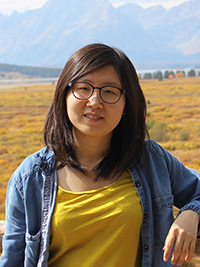
Xiaochuan Tian
Tian works in the field of applied and computational math. Her main area of expertise is numerical analysis, which focuses on the development and theoretical analysis of algorithms for mathematical models, with an eye toward computational efficiency and stability. This often incorporates mathematical and computational tools from linear algebra, analysis, modeling and scientific computing, among others. Her current research interests include nonlocal vector calculus, applied partial differential equations, nonlocal and fractional models, meshfree methods, and multiscale and stochastic modeling with applications in materials science.
Tian’s work has been recognized with several awards, including the Association for Women in Mathematics Dissertation Prize (2018), The Society for Industrial and Applied Mathematics (SIAM) Outstanding Paper Prize (2016), the SIAM Review SIGEST Award (2019), and an NSF CAREER Award (2023). She received her Ph.D. in Applied Mathematics from Columbia University. Before joining UC San Diego, Tian was an R.H. Bing Instructor in the Department of Mathematics at the University of Texas at Austin.
“I am excited to develop fundamental mathematical frameworks and novel numerical methods for analyzing and efficiently solving mathematical models that arise from scientific fields,” she stated. “And I am very grateful to the Alfred P. Sloan Foundation for this award. This fellowship is not only a critical support for my students and myself, but also a great honor. I am profoundly honored to be selected as a 2023 Sloan Fellow alongside a cohort of past fellows whose outstanding work I have long admired.”
Share This:
You May Also Like
Stay in the Know
Keep up with all the latest from UC San Diego. Subscribe to the newsletter today.
